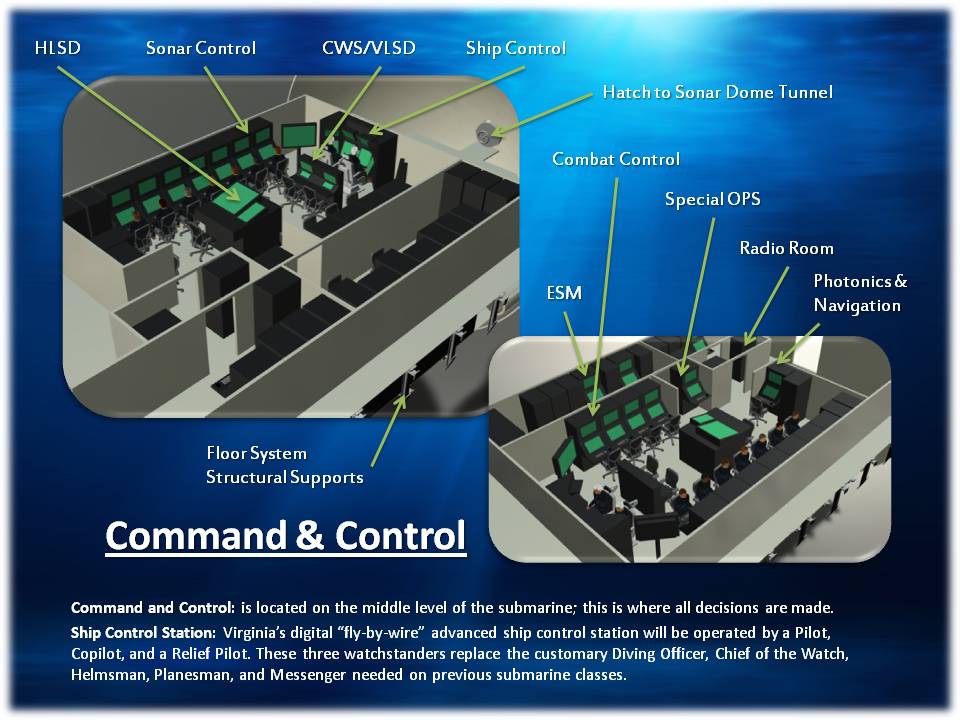

VPM incorporates four additional large diameter payload tubes in a new hull section located amidships. The next major change is the incorporation of the Virginia Payload Module (VPM), starting with the second Block V ship, SSN 803, currently under construction. Block III hulls include the eight ships procured from 2008 through and 2013 (SSNs 784-791). The Block III design changes will continue on all future Virginias and were successfully proven out during USS North Dakota's (SSN 784) builder sea trials in August 2014. The VPTs simplify construction, reduce acquisition costs, and provide for more payload flexibility than the smaller VLS tubes due to their added volume. The new bow also replaces the 12 individual Vertical Launch System (VLS) tubes with two large diameter 87-inch Virginia Payload Tubes (VPTs), each capable of launching six Tomahawk cruise missiles using Multiple All-up Round Canisters (MACs) already employed on SSGNs. Most of the changes are found in the bow where the traditional, air-backed sonar sphere has been replaced with a water-backed Large Aperture Bow (LAB) array which reduces acquisition and life-cycle costs while providing enhanced passive detection capabilities. Additionally, through the extensive use of modular construction, open architecture, and commercial off-the-shelf components, the Virginia class is designed to remain state-of-the-practice for its entire operational life through the rapid introduction of new systems and payloads.Īs part of the Virginia-class' third, or Block III, contract, the Navy redesigned approximately 20 percent of the ship to reduce their acquisition costs. With the removal of the barrel periscopes, the ship's control room has been moved down one deck and away from the hull's curvature, affording it more room and an improved layout that provides the commanding officer with enhanced situational awareness. In Virginia-class SSNs, traditional periscopes have been supplanted by two photonics masts that host visible and infrared digital cameras atop telescoping arms. The class also has a large lockout truck (LOT) for divers. The class has special features to support SOF, including a reconfigurable torpedo room which can accommodate a large number of SOF personnel and all their equipment for prolonged deployments, as well as future off-board payloads. The Virginia class has several innovations that significantly enhance its warfighting capabilities, including in littoral - or coastal - operations. Twenty-oneVirginias have been commissioned to date, and they will replace Los Angeles Class submarines as they retire. The Navy continues to build the next-generation attack submarine, the Virginia (SSN 774) class. This hull section provides for additional payloads to accommodate advanced technology used to carry out classified research and development and for enhanced warfighting capabilities.

The third ship of the class, USS Jimmy Carter (SSN 23), has a 100-foot hull extension called the multi-mission platform. Though lacking VLS, the Seawolf class has eight torpedo tubes and can hold up to 50 weapons in its torpedo room. Commissioned July 19, 1997, USS Seawolf-class (SSN 21) submarines are exceptionally quiet, fast, well-armed, and equipped with advanced sensors. The Navy also has three Seawolf-class submarines.

Thirty of those are equipped with twelve Vertical Launch System (VLS) tubes for firing Tomahawk cruise missiles. Los Angeles-class (SSN 688) submarines are the backbone of the submarine force, with approximately forty now in commission. The Navy has three classes of SSNs in service. With the number of foreign diesel-electric/air-independent propulsion submarines increasing, the United States Submarine Force relies on its technological superiority and the speed, endurance, mobility, stealth, and payload afforded by nuclear power to retain its preeminence in the undersea battlespace. Attack submarines are designed to seek and destroy enemy submarines and surface ships project power ashore with Tomahawk cruise missiles and Special Operation Forces (SOF) carry out Intelligence, Surveillance and Reconnaissance (ISR) missions support battle group operations and engage in mine warfare.


 0 kommentar(er)
0 kommentar(er)
